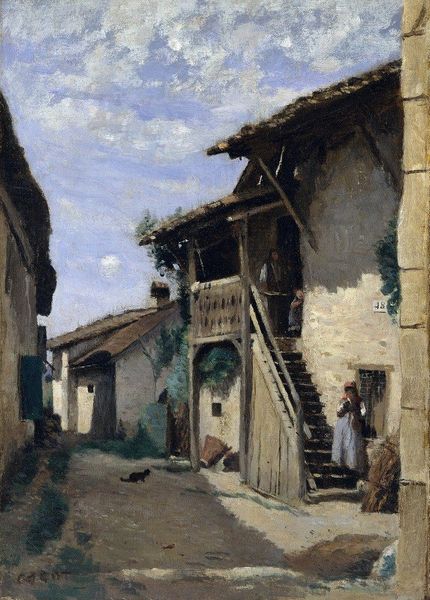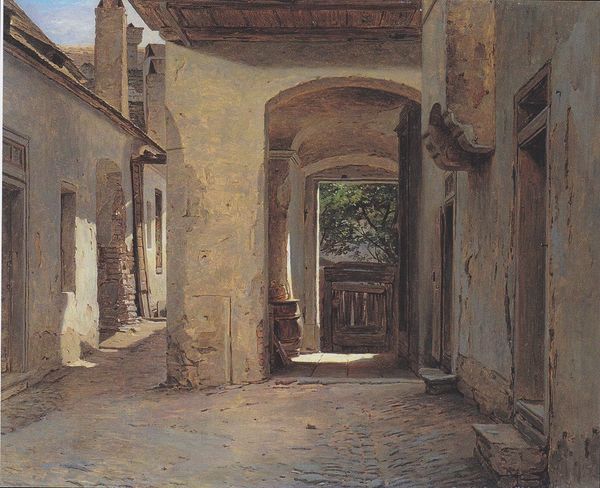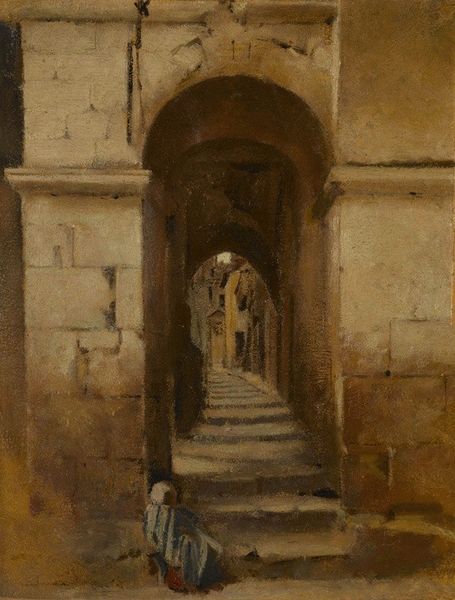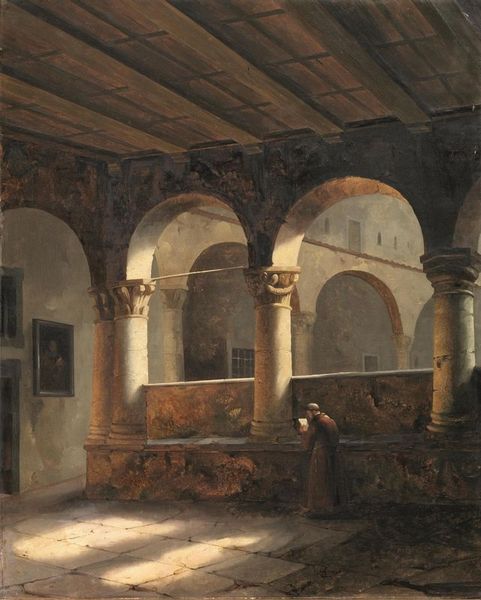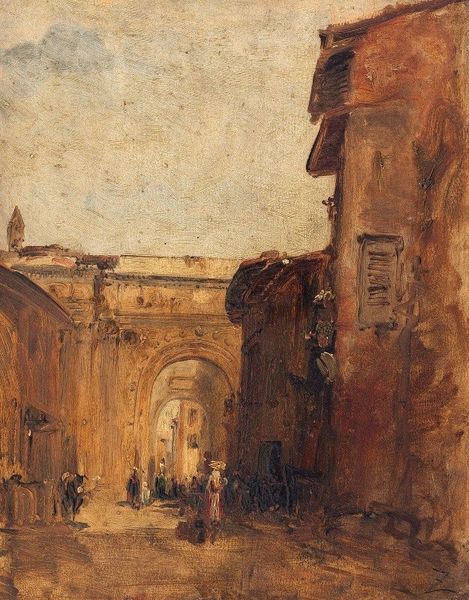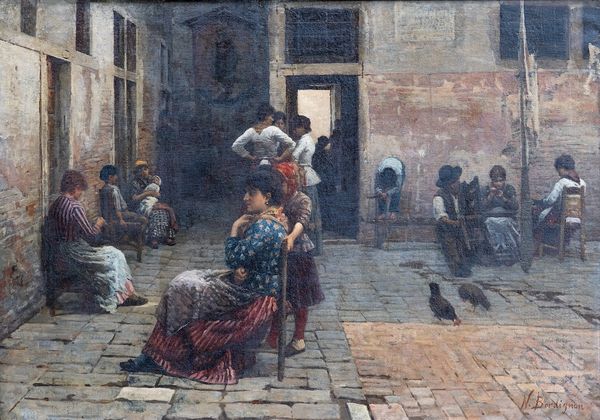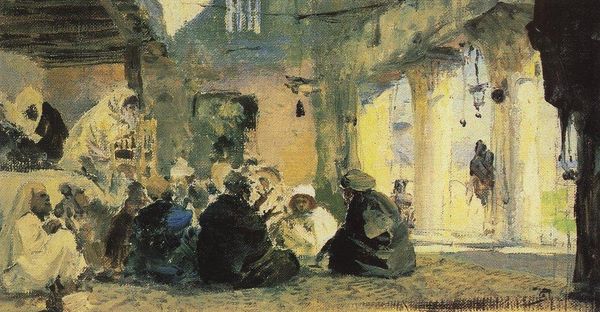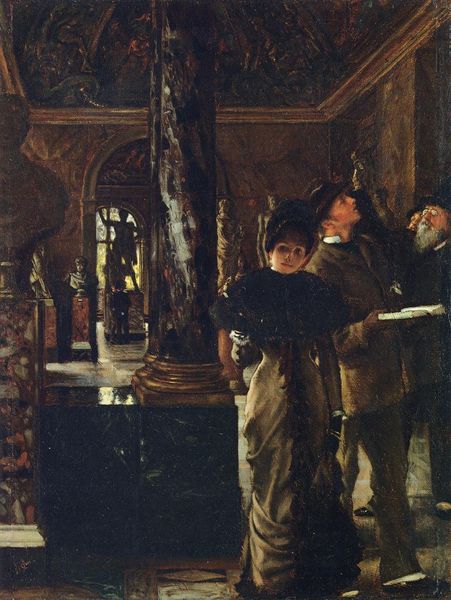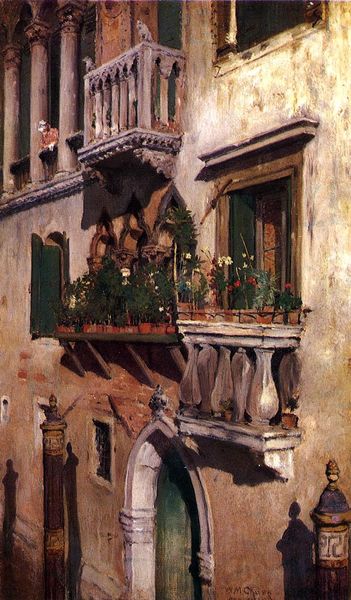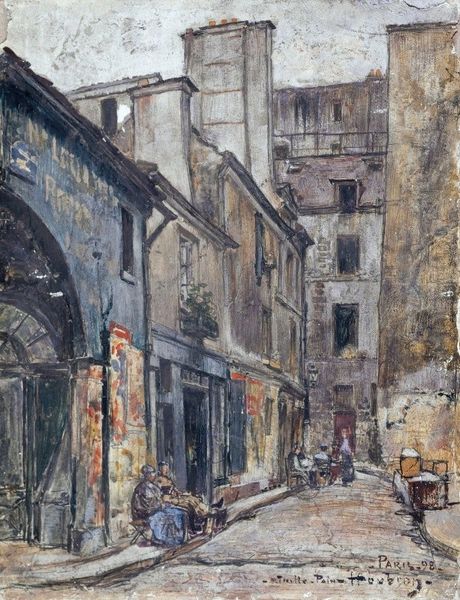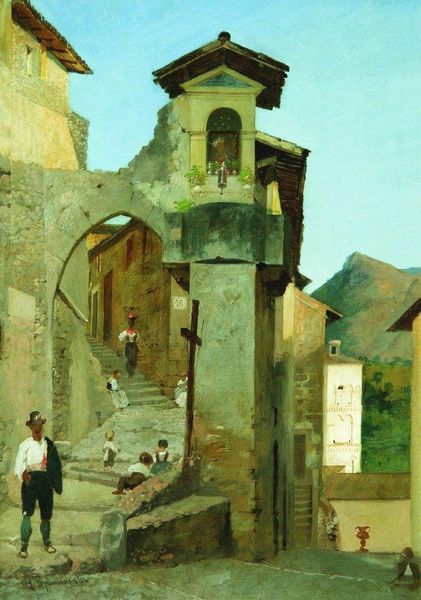
Dimensions: 53.66 x 72.71 cm
Copyright: Public domain
Editor: Here we have Julius Leblanc Stewart's "Venetian Market Scene," painted in 1907 using oil paint. I’m immediately struck by the way the light filters through the colonnade, giving it a sense of being both open and enclosed. What's your interpretation of the scene, and how might it reflect the socio-cultural context of the time? Curator: Well, at the turn of the century, Venice was becoming increasingly mythologized for tourists. This painting strikes me as less about capturing the grit of Venetian life, and more about creating a picturesque version for consumption. Stewart has very consciously created a vista onto "urban life", almost in the style of "street photography" - what social classes are prominently displayed, and which are ignored, perhaps relegated to background roles? Editor: So you're suggesting it’s a carefully curated image rather than a pure representation of Venetian society? Do you think Stewart's choices reflect the expectations of his patrons? Curator: Exactly! Stewart, an American expatriate, was likely painting for a well-to-do international clientele. Notice the emphasis on leisure and the implied wealth suggested by the fashionable figures in the background. It conveniently overlooks the potential poverty and the less appealing aspects of urban existence for the sake of beauty. What feeling do the more subdued tones of the underlit colonnade suggest to you? Editor: That makes sense; the soft colors do add to the romanticized view. So, beyond aesthetics, the painting performs a kind of social role. It pleases by showing a harmonious view, even if partially constructed. I hadn't thought about that before, focusing more on artistic impressions. Curator: Precisely. Consider also the art market dynamics and museum politics shaping the reception of such imagery, contributing to a particular understanding of Venice then, and even now. Editor: This perspective has opened my eyes! I see now how even an apparently simple landscape painting is entangled with history and cultural politics.
Comments
No comments
Be the first to comment and join the conversation on the ultimate creative platform.

